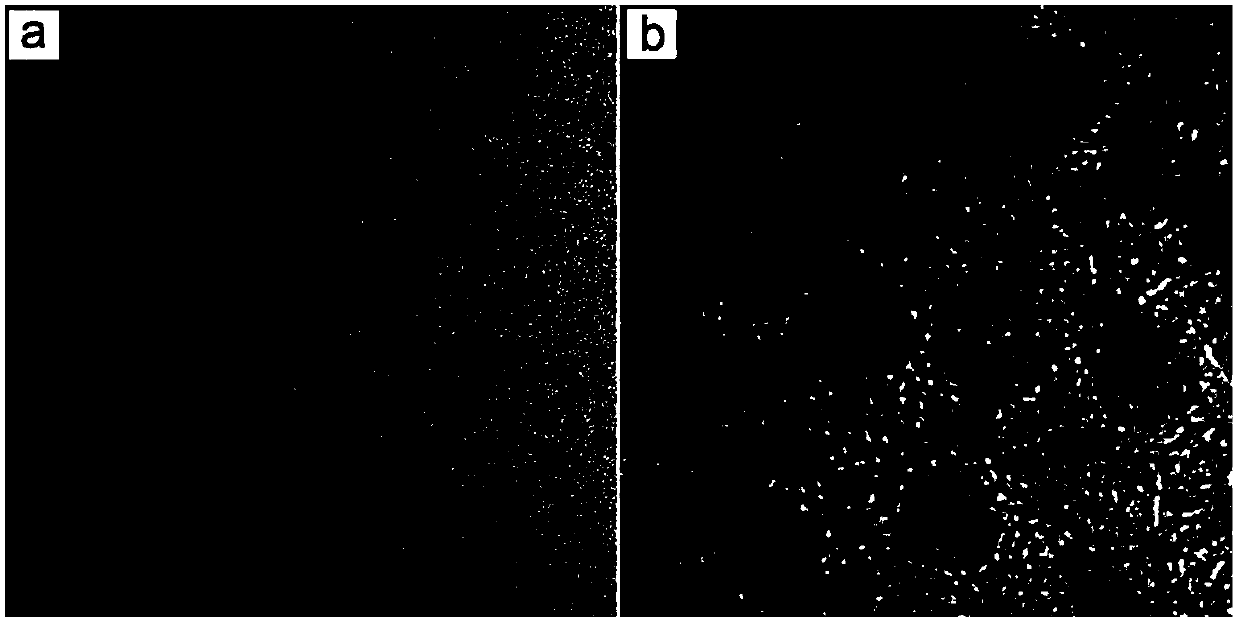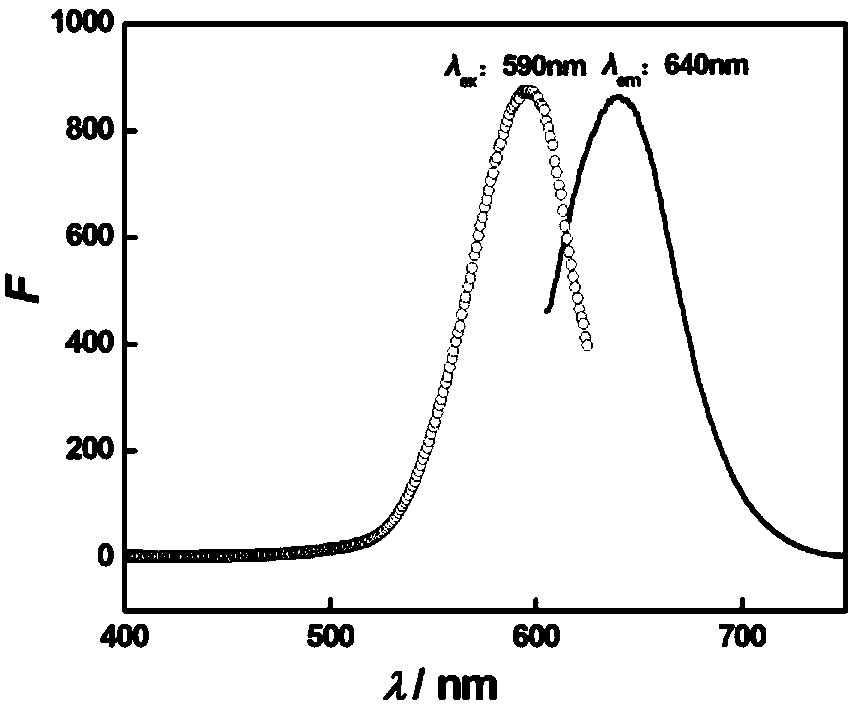Novel method for high-sensitivity and wide detection range fluorescence detection of alendronate sodium (ALDS)
A technology of sodium alendronate and sodium alendronate, which is applied in the field of fluorescence detection of sodium alendronate, can solve the problems of large measurement error, complicated operation, and poor sensitivity, and achieve high selectivity detection and low background Signal, practical effect
- Summary
- Abstract
- Description
- Claims
- Application Information
AI Technical Summary
Problems solved by technology
Method used
Image
Examples
Embodiment 1
[0040] Example 1 Synthesis and spectroscopic determination of DNA-AgNCs
[0041] Preparation of DNA stock solution
[0042] The lyophilized DNA powder was centrifuged at 6000rpm for 10min, and 31μL of PB buffer (pH 6.6) was slowly added to prepare a 100μmol / L stock solution, which was stored in a refrigerator at 4°C for later use.
[0043] Synthesis of DNA-AgNCs
[0044] Add AgNO to the prepared DNA solution at a molar ratio of 1:6 3 solution (18.6μmol / L), vortexed in 20mmol / L PB buffer (pH 6.6) for 5min, incubated in the dark for 20min, and then quickly added AgNO 3 Equimolar concentration of NaBH 4 The solution (18.6mol / L) was stored in a refrigerator at 4°C for future use.
[0045] The synthesized DNA-AgNCs were imaged by high-resolution transmission electron microscope, transmission electron microscope model: Tecnai G2F20S-TWIN; measurement conditions: accelerating voltage 300kV. see results figure 1 , figure 1 Middle a and b are high-resolution transmission electro...
Embodiment 2
[0048] The preparation and detection method of embodiment 2 solution
[0049] Preparation of Alendronate Sodium Standard Stock Solution
[0050] Accurately weigh 0.0162g of alendronate sodium in a brown vial, dissolve and dilute to 5mL with ultrapure water, and prepare 10 - 2 mol / L standard stock solution, stored in a refrigerator at 4°C. Before use, dilute to concentrations of: 10 -3 , 5×10 -4 、10 -4 , 5×10 -5 、10 -5 , 5×10 -6 、10 -6 、10 -7 、10 -8 mol / L series of standard solutions.
[0051] Preparation of alendronate sodium test solution
[0052] Take 20 tablets of Alendronate Sodium Tablets from 3 batches respectively, accurately weigh them, grind them finely, and accurately weigh an appropriate amount of fine powder (approximately equivalent to 1 mg of Alendronic Acid), put them in an 8mL measuring bottle, add an appropriate amount of water and ultrasonically Dissolve alendronate sodium, dilute to the mark with water, shake well, centrifuge at 3000rpm for 3min...
Embodiment 3
[0058] Example 3 Investigation of Influencing Factors
[0059] The inventors studied Cu 2+ The influence of concentration, pH of the system and reagent addition sequence on the detection results is as follows.
[0060] Cu 2+ The influence of concentration on detection results: a certain concentration of Cu 2+ The solution was added to the mixed solution of PB buffer (pH 7.4) and DNA-AgNCs (310nmol / L) and vortexed to mix well, and stood at room temperature for 15min, and finally made up to 400μL with ultrapure water, and stood at room temperature for 20min. Measure the fluorescence parameters according to Example 2. Cu 2+ When the concentration is 0-1200nmol / L, the fluorescence intensity of DNA-AgNCs in the system is as follows: image 3 shown. Depend on image 3 It can be seen that when Cu 2+ After adding, the fluorescence of DNA-AgNCs was rapidly quenched, with Cu 2+ As the concentration increases, the fluorescence intensity gradually decreases until it is completely...
PUM
 Login to View More
Login to View More Abstract
Description
Claims
Application Information
 Login to View More
Login to View More - R&D
- Intellectual Property
- Life Sciences
- Materials
- Tech Scout
- Unparalleled Data Quality
- Higher Quality Content
- 60% Fewer Hallucinations
Browse by: Latest US Patents, China's latest patents, Technical Efficacy Thesaurus, Application Domain, Technology Topic, Popular Technical Reports.
© 2025 PatSnap. All rights reserved.Legal|Privacy policy|Modern Slavery Act Transparency Statement|Sitemap|About US| Contact US: help@patsnap.com



